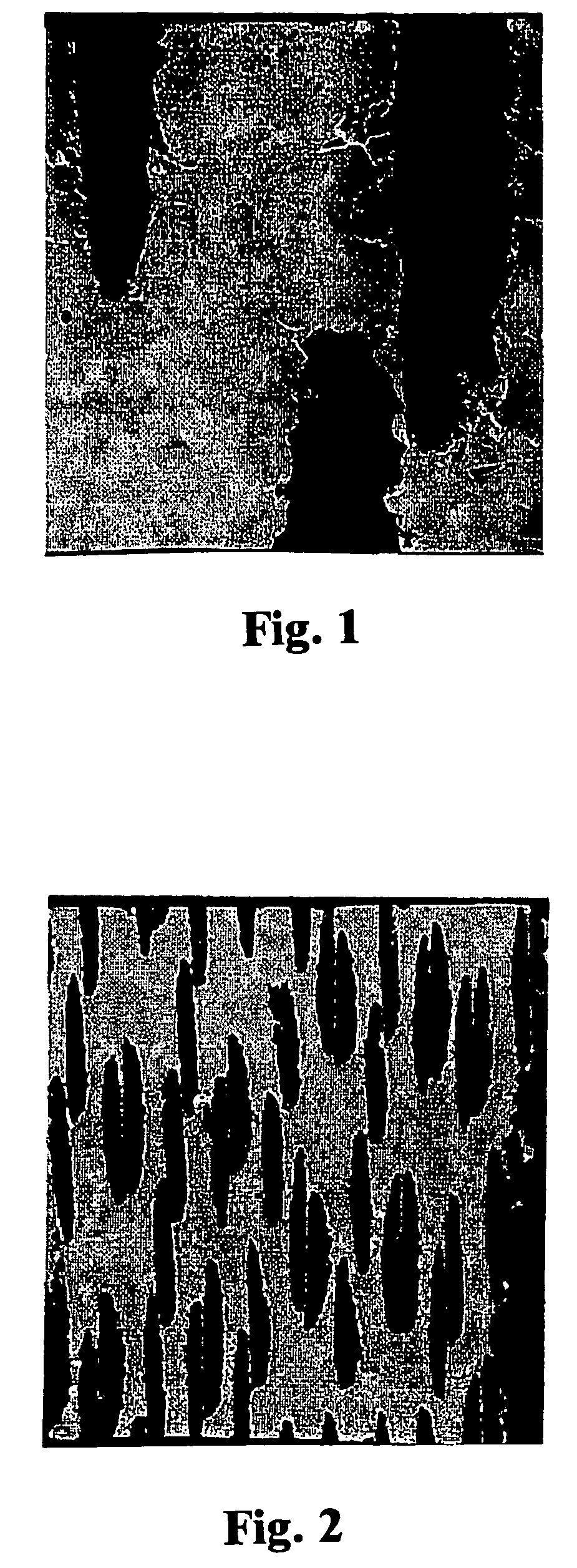Method of making carbon fiber-carbon matrix reinforced ceramic composites
a technology of carbon fiber and composites, applied in the field of carbon fiber-carbon-fiber matrix reinforced ceramic composites, can solve the problem of not having a uniform composition throughout the composition of metal carbide, and achieve the effect of more ductile and crack-free ceramic and aggressive diffusing
- Summary
- Abstract
- Description
- Claims
- Application Information
AI Technical Summary
Benefits of technology
Problems solved by technology
Method used
Image
Examples
Embodiment Construction
[0024]A preferred composite according to the present invention comprises a plurality of fiber bundles in the form of carbon fiber tows braided into a generally cylindrical combustion chamber preform having a length of about 8 inches, an inside diameter of about 2.5 inches, and an outside diameter of about 2.85 inches. Each of the tows contained from approximately 2000 to 3000 individual carbon fibers (or filaments) with an average diameter of about 10 microns.
[0025]The preform was subjected to a low temperature chemical vapor deposition process to form a dense continuous interface coating of zirconium oxide on each individual fiber. A standard vertically mounted quartz glass chemical vapor deposition reactor (8 inch outside diameter, 4 feet long with a wall thickness of about 2 millimeters) was equipped with a chlorination container loaded with 400 grams of zirconium metal turnings, and two ¼ inch stainless steel feed gas inlet tubes, one for oxygen and one for zirconium chloride. C...
PUM
| Property | Measurement | Unit |
|---|---|---|
| Percent by volume | aaaaa | aaaaa |
| Volume | aaaaa | aaaaa |
| Metallic bond | aaaaa | aaaaa |
Abstract
Description
Claims
Application Information
 Login to View More
Login to View More - R&D
- Intellectual Property
- Life Sciences
- Materials
- Tech Scout
- Unparalleled Data Quality
- Higher Quality Content
- 60% Fewer Hallucinations
Browse by: Latest US Patents, China's latest patents, Technical Efficacy Thesaurus, Application Domain, Technology Topic, Popular Technical Reports.
© 2025 PatSnap. All rights reserved.Legal|Privacy policy|Modern Slavery Act Transparency Statement|Sitemap|About US| Contact US: help@patsnap.com

